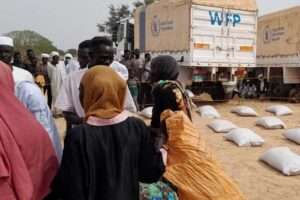Nourishing Communities: Tackling Hunger and Malnutrition Worldwide
Food Security and Nutrition Globally: A Comprehensive Overview
Introduction:
Food security and nutrition are fundamental components of human well-being, yet millions of people worldwide continue to face hunger and malnutrition. Addressing these issues requires a multifaceted approach that encompasses sustainable food production, distribution, and access for all.
Global Food Security and Nutrition Statistics:
According to recent data from the United Nations, over 800 million people worldwide suffer from chronic hunger, and approximately 2 billion people lack access to safe and nutritious food. Malnutrition, including both undernutrition and obesity, affects people of all ages and contributes to a range of health and developmental issues.
Challenges in Achieving Food Security and Nutrition:
- Poverty: Economic constraints prevent many families from accessing an adequate and nutritious diet, leading to chronic hunger and malnutrition.
- Food Insecurity: Unequal distribution of food resources and inadequate infrastructure contribute to food insecurity, particularly in rural and marginalized communities.
- Climate Change: Extreme weather events, changing precipitation patterns, and environmental degradation threaten agricultural productivity and exacerbate food insecurity.
- Conflict and Displacement: Conflict and displacement disrupt food systems, limit access to food and nutrition, and exacerbate hunger and malnutrition in affected populations.
Approaches to Promoting Food Security and Nutrition:
- Sustainable Agriculture: Promoting sustainable farming practices, such as agroecology and organic farming, to improve crop yields, preserve soil health, and enhance resilience to climate change.
- Nutrition Education: Educating communities about the importance of balanced diets, breastfeeding, and micronutrient supplementation to prevent malnutrition and promote overall health.
- Food Distribution Systems: Developing efficient and equitable food distribution systems to ensure that nutritious food reaches all populations, including remote and underserved areas.
- Policy Interventions: Implementing policies that support smallholder farmers, regulate food markets, and provide social safety nets to vulnerable populations.
- Community Empowerment: Empowering communities to take ownership of food production and distribution through community gardens, farmers’ markets, and cooperative networks.
Global Initiatives and Organizations:
Several international organizations and initiatives are dedicated to addressing food security and nutrition on a global scale, including:
- United Nations World Food Programme (WFP): The WFP is the world’s largest humanitarian organization fighting hunger worldwide, providing food assistance to millions of people in crisis-affected areas.
- Food and Agriculture Organization of the United Nations (FAO): The FAO works to eliminate hunger, improve food security, and promote sustainable agriculture through research, policy development, and technical assistance.
- Global Alliance for Improved Nutrition (GAIN): GAIN works to increase access to nutritious foods for vulnerable populations, particularly women and children, through public-private partnerships and nutrition programs.
- World Health Organization (WHO): The WHO provides leadership on global health issues, including nutrition, by developing evidence-based guidelines and strategies to address malnutrition and promote healthy diets.
Conclusion:
Achieving food security and nutrition for all is a complex and multifaceted challenge that requires coordinated efforts at the global, national, and local levels. By promoting sustainable food production, distribution, and access, we can eradicate hunger and malnutrition and ensure a healthier and more prosperous future for all.




